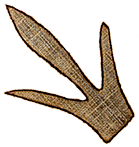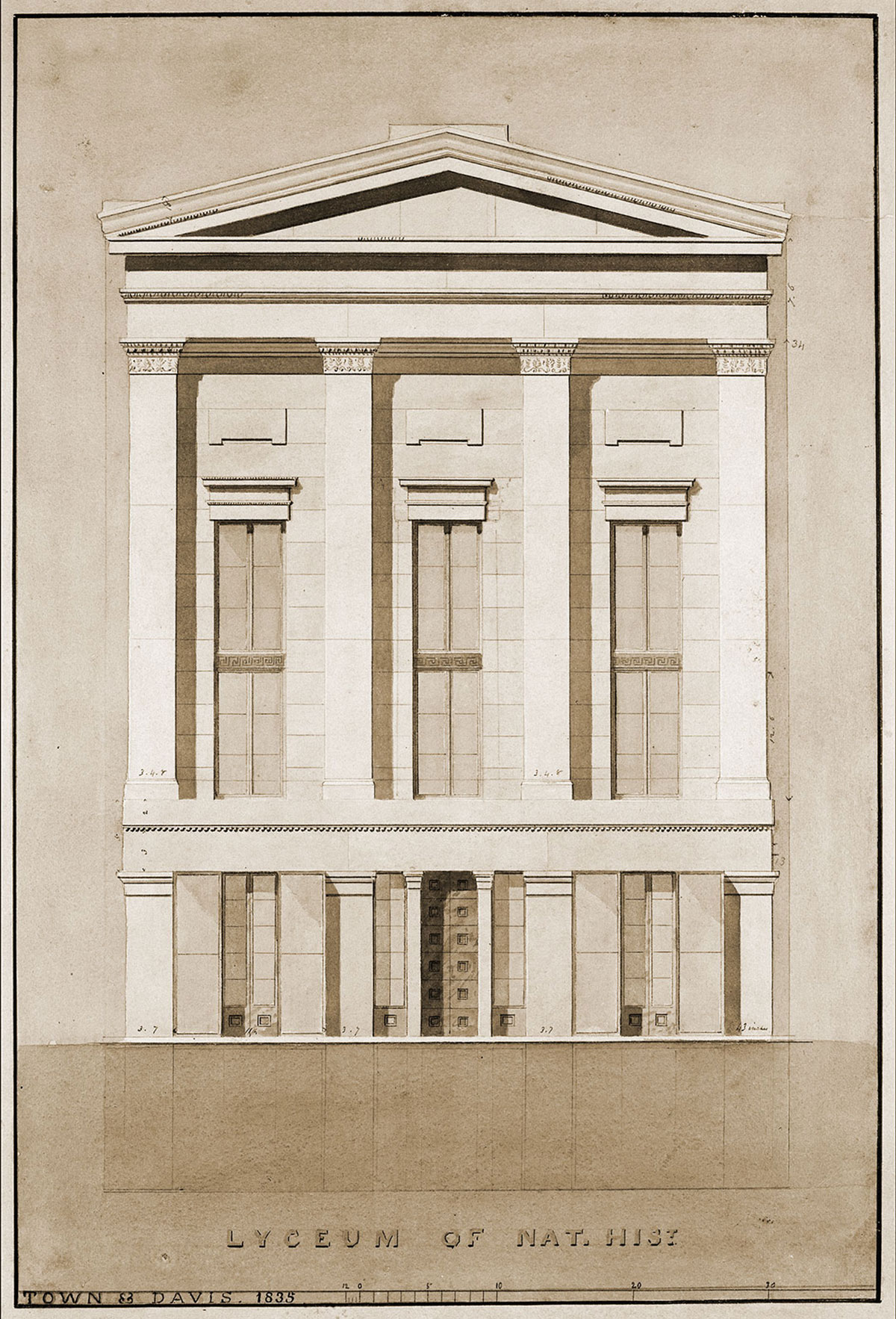 MENU
MENU
 MENU
MENU

The Lyceum of Natural History in the City of New York was founded in 1817. The classical architecture signals its serious mission to educate and elevate the populace. Image courtesy of Wikimedia Commons.
Dexter Marsh could have succeeded in another business had he never seen a fossil footprint, but because of them, this self-educated laborer received recognition in elite academic circles. His growing self-confidence can be seen in a letter he sent to Benjamin Silliman at the American Journal of Science, published in November of 1848, more than thirteen years after he first saw footprints in the sidewalk slab.
He occasionally attended scientific meetings, such as the ones held regularly at the Boston Society of Natural History. He was bestowed memberships in prestigious scientific societies: the American Association of Geologists and Naturalists (later called the American Association for the Advancement of Science) in 1846, the Lyceum of Natural History in New York in 1852, and the Academy of Natural Science in Philadelphia, also in 1852.
This was no small accomplishment. Membership required nomination by a current member, the great majority of whom were well-educated scientific men, often physicians. Even though many were themselves amateurs, they would not often consider an amateur from the "mechanic" class to join their elite institutions. They preferred to have world-famous scientists as honorary or corresponding members. Dexter Marsh was in lofty company.
At some point, people began to call Dexter Marsh "the Hugh Miller of America." Hugh Miller was a Scottish laborer who became a newspaper editor and trained himself in geology. His several books on the topic became very popular. The comparison between Miller and Marsh was probably due to their shared deeply held religious convictions, lack of formal education, and determination to learn geology. However, Marsh never wrote a paper about the tracks, much less a book, and would probably be compared more accurately to the English fossil collector and seller Mary Anning.